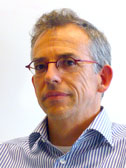NASA has recently selected five Explorer Mission Program of Opportunity proposals for a Phase A-Concept Study. GUSSTO, which stands for Galactic/Xgalactic Ultra long duration balloon Spectroscopic Stratospheric THz Observatory, is one of two astrophysics missions selected. Of these two missions NASA plans to choose one for flight. This is exciting news for SRON and the …
Category: News items
Sunday 30 October: open day SRON Groningen
Image On 30 October 2011 SRON Netherlands Institute for Space Research will open its doors to the public as part of the October Knowledge Month series of events. At the Groningen location, visitors will have the opportunity to learn about the latest developments in space research by means of presentations, demonstrations, lectures and films. A …
HIFI discovers abundance of water round young star
Sterrenkundigen hebben met de Herschel-ruimtetelescoop voor het eerst koude waterdamp gevonden in een planeetvormende schijf rond een jonge ster. Deze ontdekking duidt erop dat deze schijf, die bezig is zich tot een planetenstelsel te ontwikkelen, grote hoeveelheden water bevat en dat planeten met oceanen, zoals de aarde, wel eens op veel meer plaatsen in het …
Did Earth?s oceans come from comets?
This illustration shows the orbit of the Jupiter-Family comet 103P/Hartley 2 in relation to the orbits of the innermost 5 planets of the Solar System. (ESA/AOES Medialab; Herschel/HssO Consortium) ESA’s Herschel infrared space observatory has found water in a comet with almost exactly the same composition as Earth’s oceans. The discovery revives the idea that …
Space telescopes reveal secrets of turbulent black hole
Supermassive black holes at the hearts of active galaxies swallow large amounts of gas. During this feast they spill a lot of their ‘food’, which is discharged in turbulent outbursts. An international team of astronomers has revealed some striking features of such an outburst around a supermassive black hole in a distant galaxy. They found …
Herschel paints new story of galaxy evolution
ESA’s Herschel infrared space observatory has discovered that galaxies do not need to collide with each other to drive vigorous star birth. The finding overturns this long-held assumption and paints a more stately picture of how galaxies evolve. The conclusion is based on Herschel’s observations of two patches of sky, each about a third of …
Lowlands University: A Star is Born
De lezing van Rens Waters op Lowlands University was een succes. Een bomvolle tent met festivalgangers luisterde geboeid naar Waters voordracht over de vorming van sterren en planeten, en de zoektocht naar water in stervormingsgebieden en ons eigen zonnestelsel. Sinds het begin van het onderzoek naar de ruimte probeert de mens antwoorden te vinden op …
GOSAT-data now accurate enough for climate studies
Scientists from SRON Netherlands Institute for Space Research and the Karlsruhe Institute for Technology (KIT) have developed a highly accurate method to derive concentrations of the greenhouse gases CO2 ‑ and methane from observations of Japanese GOSAT satellite. GOSAT has been launched in January 2009 but till now the carbon dioxide and methane data lacked …
Astronomers searching for oxygen can breathe more easily
ESA’s Herschel space observatory has found molecules of oxygen in a nearby star-forming cloud. This is the first undisputed detection of oxygen molecules in space. It concludes a long search but also leaves questions unanswered. The HIFI instrument, developed by SRON, was used for the observations. HIFI on the Herschel satellite found oxygen molecules in …
Enceladus rains water onto Saturn
These observations were made by Herschel?s HIFI instrument on 21 June, 8 July 2009 and June 24, 2010. (NASA/JPL/Space Science Institute) ESA’s Herschel space observatory has shown that water expelled from the moon Enceladus forms a giant torus of water vapour around Saturn. The discovery solves a 14-year mystery by identifying the source of the …




